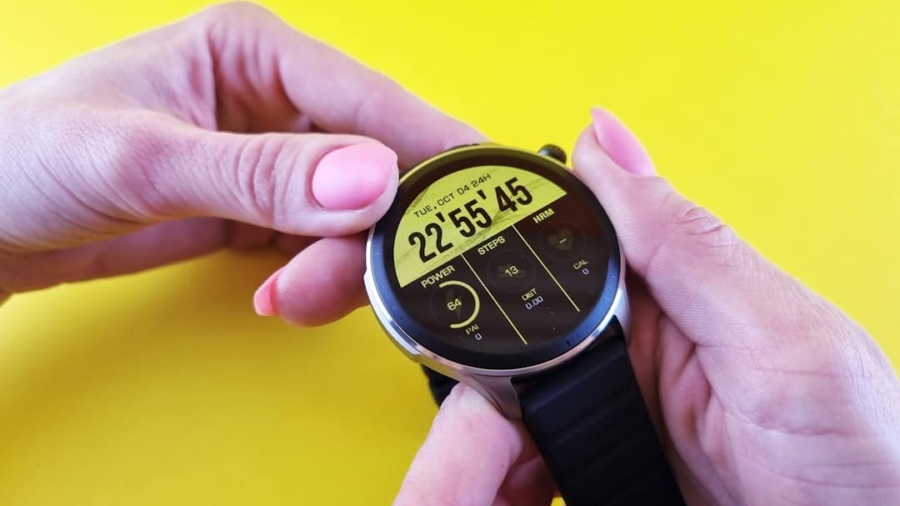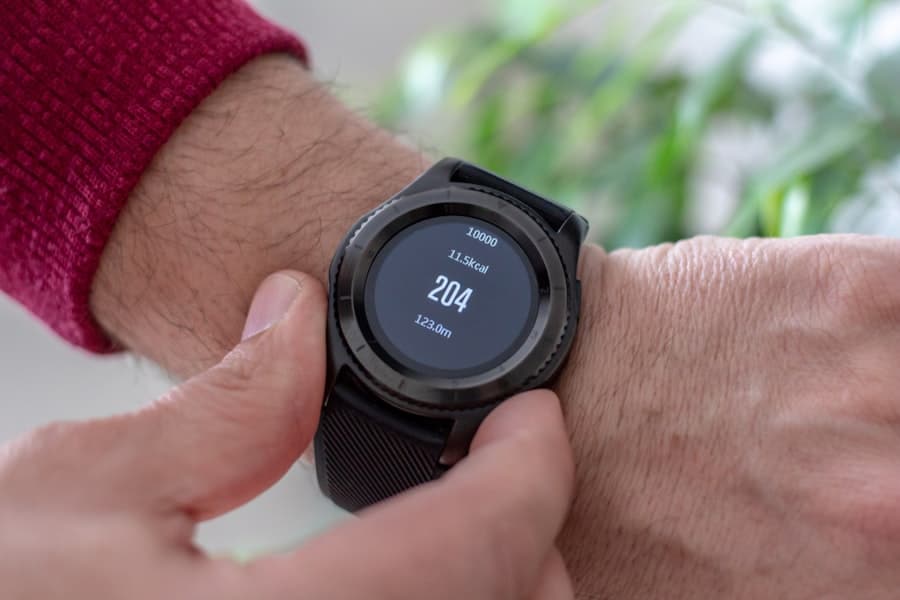Wearable technology has rapidly evolved over the past decade, transitioning from simple fitness trackers to sophisticated devices capable of monitoring a wide array of health metrics. These devices, which include smartwatches, fitness bands, and even smart clothing, have become integral to personal health management. Their ability to collect real-time data on physiological parameters such as heart rate, temperature, and activity levels has opened new avenues for tracking infectious diseases.
The COVID-19 pandemic has underscored the urgent need for innovative solutions in disease surveillance and management. Wearables offer a unique advantage in this context, as they can provide continuous monitoring of individuals’ health status, potentially identifying early signs of infection.
By leveraging the data collected from these devices, public health officials can gain insights into disease spread, monitor outbreaks in real-time, and implement timely interventions. This article delves into the current applications of wearables in tracking infectious diseases, particularly COVID-19, explores advancements in technology, addresses challenges and ethical considerations, and envisions the future impact of wearables on public health.
Key Takeaways
- Wearables have the potential to revolutionize infectious disease tracking by providing real-time data on individuals’ health and movement.
- Current use of wearables in COVID-19 tracking includes monitoring symptoms, contact tracing, and enforcing quarantine measures.
- Advancements in wearable technology, such as the development of biosensors and AI algorithms, are improving the accuracy and efficiency of infectious disease tracking.
- Challenges and limitations of wearables in infectious disease tracking include data security, accuracy of readings, and accessibility to vulnerable populations.
- Ethical and privacy considerations in wearable technology for infectious disease tracking are crucial for maintaining trust and ensuring individual rights are respected.
Current Use of Wearables in COVID-19 Tracking and Monitoring
Detecting Early Symptoms
Some wearables can monitor changes in heart rate variability and body temperature, two critical indicators that may signal the onset of illness. Research has shown that deviations from an individual’s baseline metrics can be indicative of infection, prompting users to seek medical advice or get tested.
Predicting Infections
Several studies have demonstrated the efficacy of wearables in predicting COVID-19 infections before symptoms manifest. A notable example is a study conducted by researchers at Stanford University, which utilized data from smartwatches to identify patterns that correlated with positive COVID-19 test results.
Empowering Individuals and Public Health
The study found that changes in resting heart rate and sleep patterns could serve as early warning signs of infection. This capability not only empowers individuals to take proactive measures but also aids public health authorities in understanding transmission dynamics within communities.
Advancements in Wearable Technology for Infectious Disease Tracking
The landscape of wearable technology is continuously evolving, with advancements that enhance their utility in infectious disease tracking. One significant development is the integration of advanced sensors capable of measuring a broader range of physiological parameters. For example, some wearables now include sensors that can detect blood oxygen levels (SpO2), which is particularly relevant for monitoring respiratory illnesses like COVID-19.
This feature allows users to track their oxygen saturation levels in real-time, providing critical information that can indicate worsening health conditions. In addition to improved sensor technology, machine learning algorithms are increasingly being employed to analyze the vast amounts of data generated by wearables. These algorithms can identify patterns and anomalies that may not be immediately apparent to human observers.
For instance, companies like Oura Health have developed algorithms that analyze sleep quality, heart rate variability, and other metrics to provide personalized health insights. Such advancements not only enhance individual health monitoring but also contribute to larger datasets that can inform public health strategies and interventions.
Challenges and Limitations of Wearables in Infectious Disease Tracking
Despite the promising potential of wearables in infectious disease tracking, several challenges and limitations must be addressed to maximize their effectiveness. One significant hurdle is the accuracy and reliability of the data collected by these devices. While many wearables are designed for general fitness tracking, they may not be calibrated for medical-grade accuracy.
This discrepancy can lead to false positives or negatives when monitoring for symptoms of infectious diseases, potentially undermining trust in the technology. Another challenge lies in user compliance and engagement. For wearables to be effective in tracking infectious diseases, users must consistently wear the devices and actively engage with the data they provide.
However, studies have shown that user adherence can wane over time due to factors such as discomfort, lack of motivation, or perceived ineffectiveness. Additionally, disparities in access to wearable technology can exacerbate existing health inequities, as not all populations may have equal access to these devices or the necessary digital literacy to utilize them effectively.
Ethical and Privacy Considerations in Wearable Technology for Infectious Disease Tracking
The integration of wearable technology into infectious disease tracking raises important ethical and privacy considerations that must be carefully navigated. One primary concern is data privacy; wearables collect sensitive health information that could be misused if not adequately protected. Users may be hesitant to share their data due to fears of surveillance or unauthorized access by third parties.
Ensuring robust data encryption and transparent data usage policies is essential to build trust among users and encourage widespread adoption. Moreover, ethical dilemmas arise regarding consent and data ownership. Users must be informed about how their data will be used and who will have access to it.
The potential for data sharing with employers or insurance companies raises questions about discrimination based on health metrics. Policymakers and technology developers must work collaboratively to establish clear guidelines that protect individual rights while enabling the beneficial use of data for public health purposes.
The Future of Wearables in Infectious Disease Tracking
The Future of Infectious Disease Tracking
Wearables are poised to revolutionize the field of infectious disease tracking, but their success will depend on ongoing innovation. As technology advances, we can expect wearables to incorporate features like real-time pathogen detection through biosensors or advanced algorithms that can predict outbreaks based on user data trends. The integration of artificial intelligence could further enhance predictive capabilities, allowing for more accurate forecasting of disease spread based on individual health metrics.
### Collaboration is Key
The future landscape of wearable technology for infectious disease tracking will require collaboration between tech companies, healthcare providers, and public health organizations. By pooling resources and expertise, stakeholders can develop comprehensive solutions that address both individual health needs and broader public health goals.
### Standardizing Data Collection
This collaborative approach could lead to the creation of standardized protocols for data collection and sharing, ensuring that wearables are effectively utilized in monitoring infectious diseases across diverse populations.
Potential Impact of Wearables on Public Health and Epidemiology
The potential impact of wearables on public health and epidemiology is profound. By providing real-time data on individual health metrics, wearables can facilitate early detection of infectious diseases at both individual and community levels.
For instance, if a significant number of users within a specific geographic area report elevated body temperatures or other concerning symptoms through their wearables, public health officials can respond swiftly with targeted testing or vaccination campaigns. Furthermore, the aggregation of anonymized data from wearables can enhance epidemiological research by providing insights into population-level health trends. Researchers can analyze patterns related to disease transmission, recovery rates, and even vaccine efficacy based on real-world data collected from diverse demographics.
This wealth of information can inform public health policies and resource allocation strategies, ultimately leading to more effective responses to infectious disease threats.
The Role of Wearables in Shaping the Future of Infectious Disease Tracking
As we navigate an increasingly interconnected world where infectious diseases pose significant challenges to public health, wearable technology stands out as a transformative tool for tracking and managing these threats. The ability to monitor health metrics continuously offers unprecedented opportunities for early detection and intervention. While challenges related to accuracy, user engagement, and ethical considerations remain, ongoing advancements in technology and collaborative efforts among stakeholders hold great promise for overcoming these obstacles.
In shaping the future of infectious disease tracking, wearables will likely play a pivotal role in enhancing our understanding of disease dynamics and improving individual health outcomes. By harnessing the power of real-time data collection and analysis, we can create a more responsive public health infrastructure capable of addressing current challenges while preparing for future pandemics. The journey toward integrating wearables into mainstream public health practices is just beginning, but its potential impact on epidemiology and community well-being is already becoming evident.
In a related article, Can I Install Windows 11 Without TPM?, Enicomp explores the technical requirements for upgrading to Windows 11 and the implications for users without a Trusted Platform Module. This article delves into the intricacies of TPM and its role in ensuring the security of the operating system, shedding light on the challenges faced by those looking to make the transition. As technology continues to evolve, understanding these requirements becomes crucial for users seeking to stay up-to-date with the latest advancements.
FAQs
What are wearables?
Wearables are electronic devices that can be worn on the body as accessories or implants. They are designed to perform a specific function, such as tracking health and fitness data, receiving notifications, or providing information.
How are wearables being used in COVID-19 and infectious disease tracking?
Wearables are being used to track and monitor symptoms of COVID-19 and other infectious diseases. They can collect data on vital signs, temperature, and activity levels, which can be used to detect early signs of illness and track the spread of diseases in communities.
What types of wearables are being used for infectious disease tracking?
Various types of wearables are being used for infectious disease tracking, including smartwatches, fitness trackers, and medical-grade devices. These wearables can collect data on heart rate, respiratory rate, sleep patterns, and other health metrics that may indicate the presence of an infection.
How accurate are wearables in tracking infectious diseases?
The accuracy of wearables in tracking infectious diseases varies depending on the type of device and the specific metrics being measured. While wearables can provide valuable data for early detection and monitoring, they are not a replacement for diagnostic testing and medical evaluation.
What are the potential benefits of using wearables for infectious disease tracking?
Using wearables for infectious disease tracking can provide early detection of symptoms, enable remote monitoring of individuals at risk, and help public health authorities track the spread of diseases in real time. This can lead to more effective containment and prevention strategies.
What are the challenges of using wearables for infectious disease tracking?
Challenges of using wearables for infectious disease tracking include ensuring data privacy and security, addressing disparities in access to wearable technology, and validating the accuracy and reliability of the data collected. Additionally, there may be concerns about the ethical use of personal health data.



